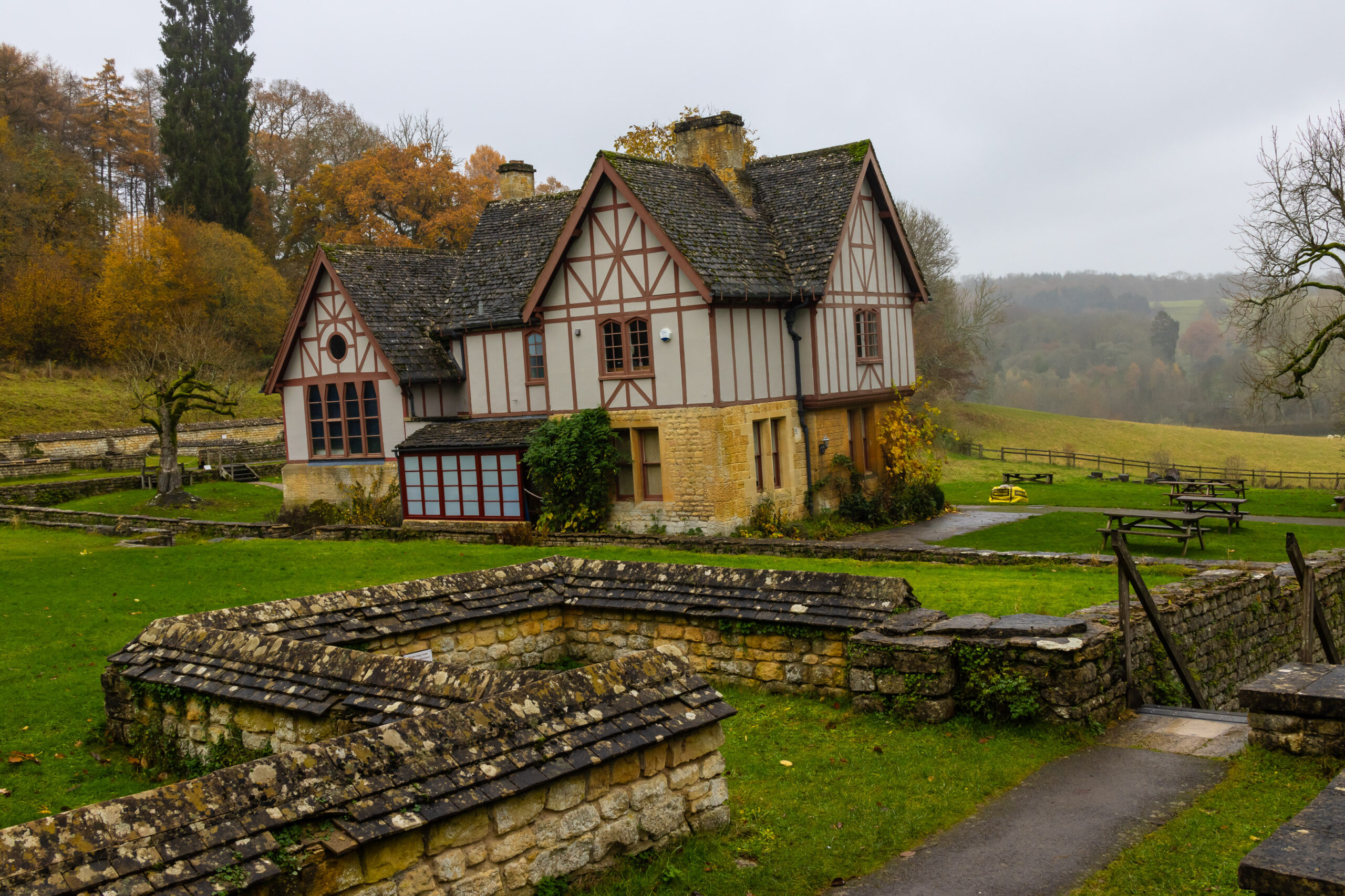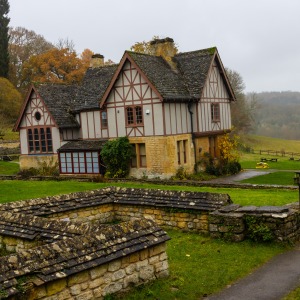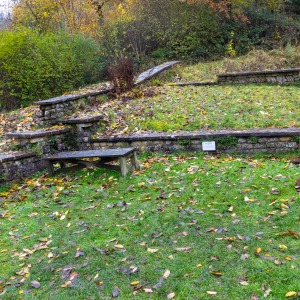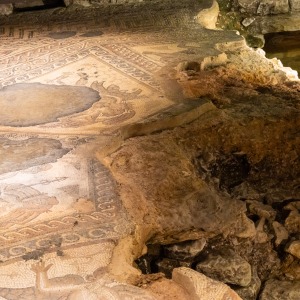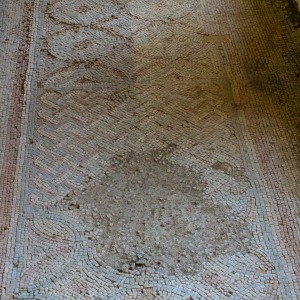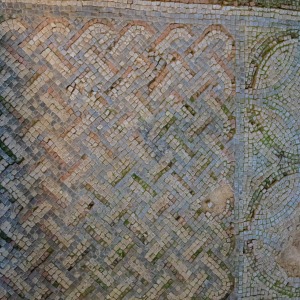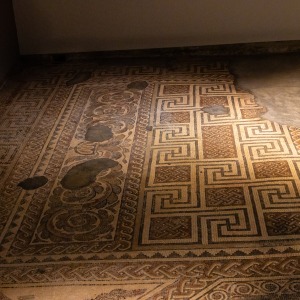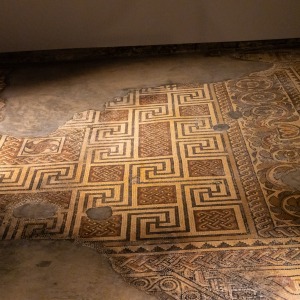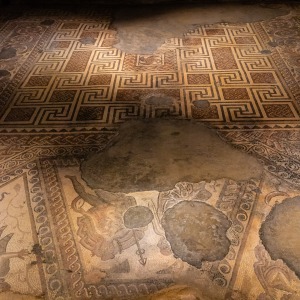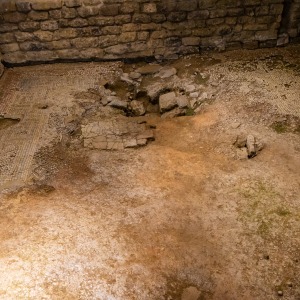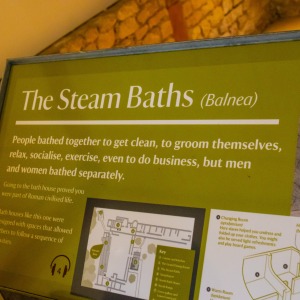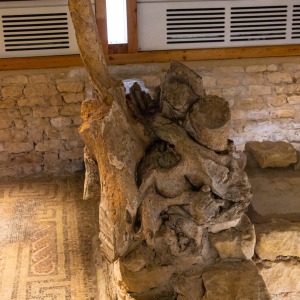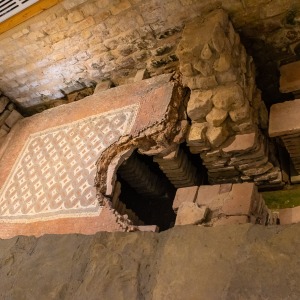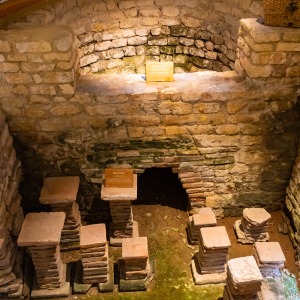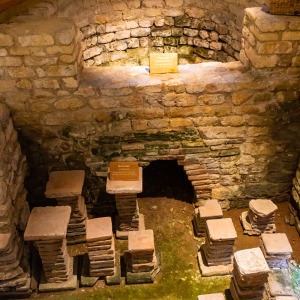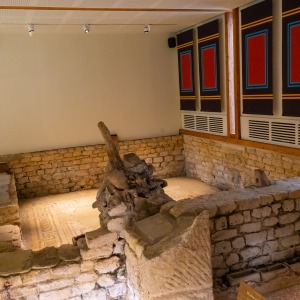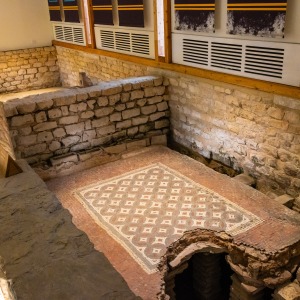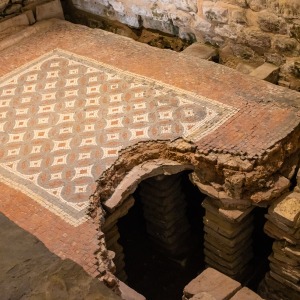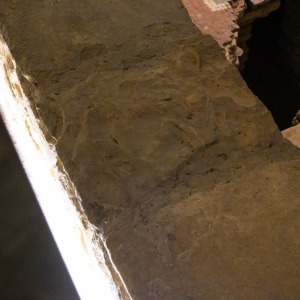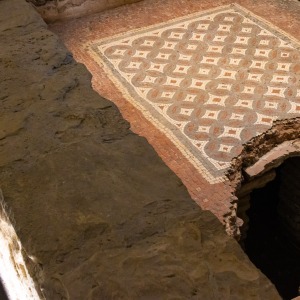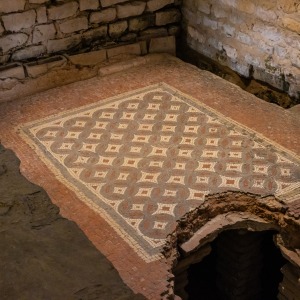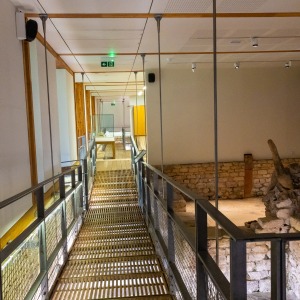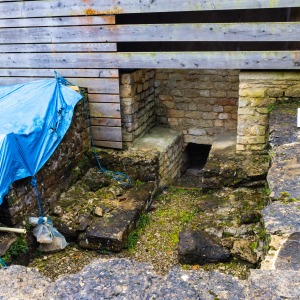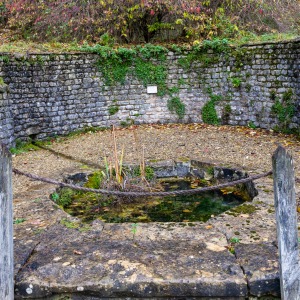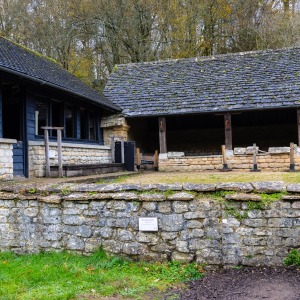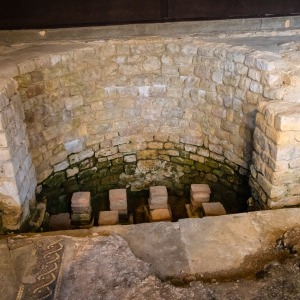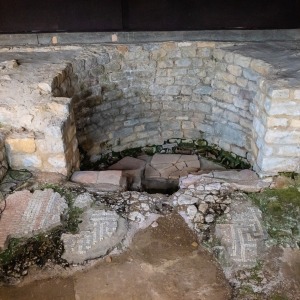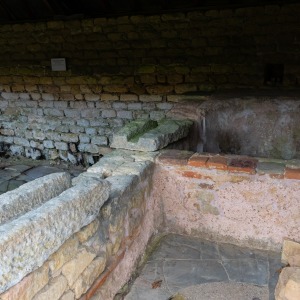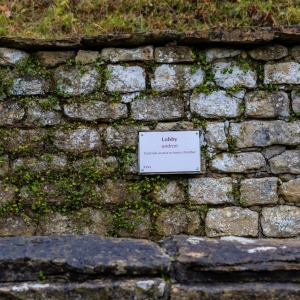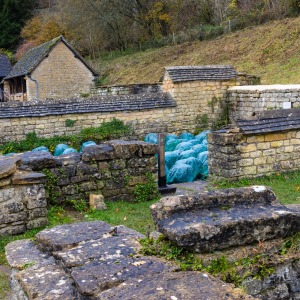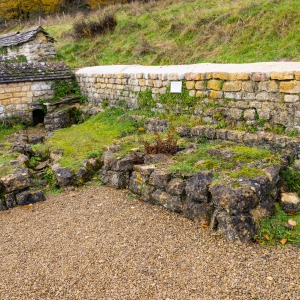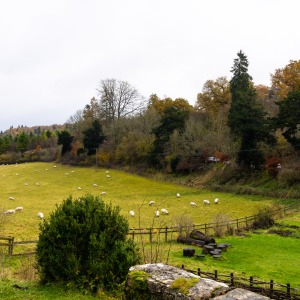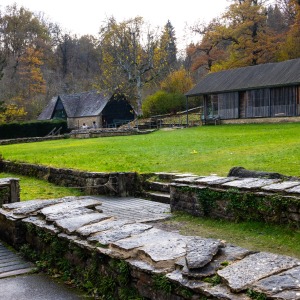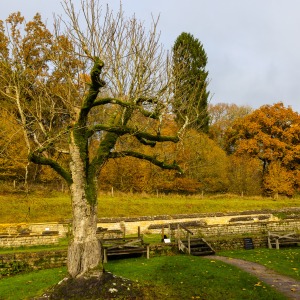National Trust – Chedworth Roman Villa
21st December 2023
On a damp, dark, cloudy day we visited Chedworth Roman Villa. This villa has been partially excavated, with protective shelters built over the top of some of the remains. Viewing of the floors and hypocausts are from walkways above. There’s a smallmuseum of finds.
We arrived along some narrow roads and parked beside the road some 200 meters from the site. The main parking was full, and there was a coach party of schoolchildren. Guided tours were available, but Rosemary and I, seeking a self-paced exploration, opted for the audio guide. It offered various options, from factual narrations about the villa’s history to playful dramatizations of life during Roman times. We decided to stick to the plain facts, eager to unravel the secrets embedded in the ancient stones.
Before delving into the ruins, we refuelled in the cozy cafe, relishing a warming coffee. After the tour we ate a light lunch there amidst the clean and cheerful ambiance. I imagine on a sun-drenched summer day, the surrounding areas would transform into a delightful picnic haven, the open air adding to the charm of the place. Somehow R managed to find their small secondhand book shop.
Our exploration along the raised walkways, overlooking fascinating remains showed us:
o – Roman Mosaics: Exquisite floors crafted from tiny coloured stones
o – Hypocausts: These ingenious underfloor heating systems, utilizing hot air channels, warmed the Roman floors and baths, offering a glimpse into their sophisticated approach to comfort.
o – Toilets: These were explained in all their glory details to the listening school kids.
Our online research unveiled a curious detail – Chedworth Roman Villa is apparently home to a thriving population of Roman Snails! These intriguing creatures, protected by their unique status, add a touch of biodiversity to the historical site.
